Stories from the Olympics (Washington, not Sochi)
Jordan Holsinger is ASC’s Scientific Manager and joined the Marten Survey as a guide this year. You can read his bio here.
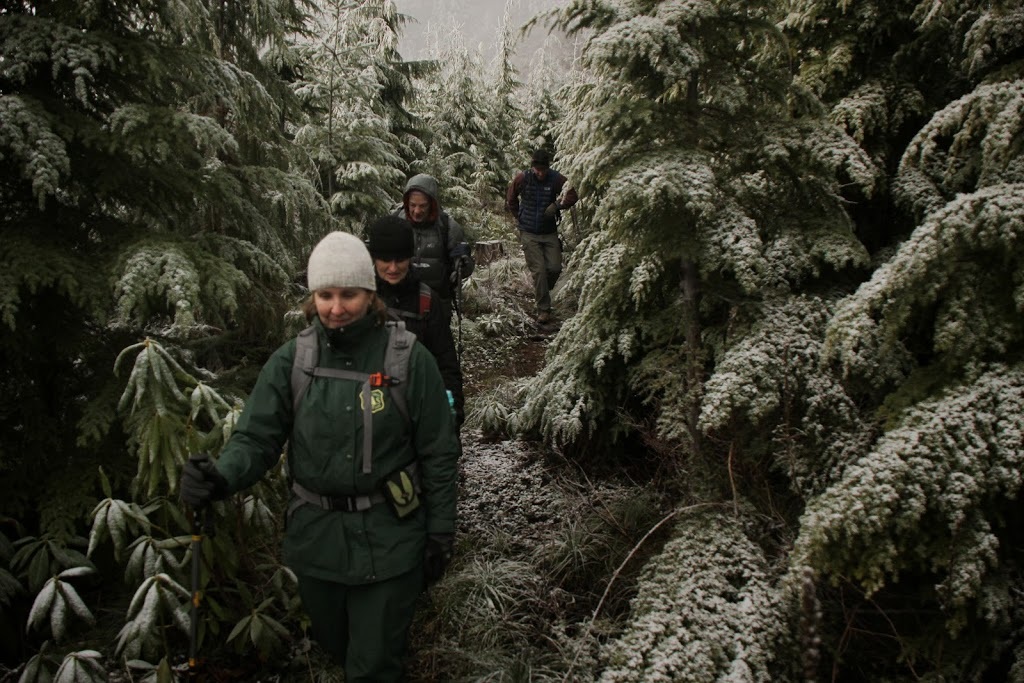
A team of ASC adventurers joined forces with USFS to search for martens on the Olympic Peninsula. Photo by Gregg Treinish.
From Jordan:
While the games in Sochi are in full swing, so is ASC’s Olympics project. Instead of Russian, however, our events are playing out in the beautiful Olympic National Forest (ONF) in Washington state. The goal there is simple, if not necessarily easy: find evidence of a coastal Pacific Marten. Though there haven’t been any confirmed sightings of marten in years, Betsy Howell, USFS Wildlife Biologist for the ONF, is hopeful that they still remain.
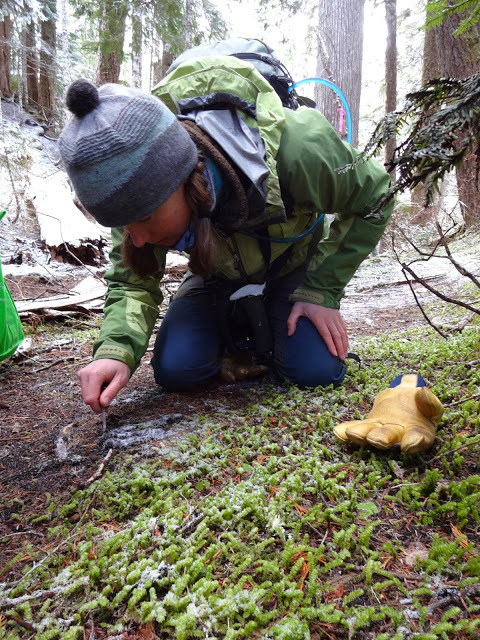
ASC guide Abby examining animal signs in the ONF. Photo by Bill Agnew.
Armed with motion-sensing cameras, raw meat and some really stinky lure, 10 crews of two hardy adventure volunteers have adopted drainages in the ONF to set up non-invasive camera traps and dutifully check and maintain them throughout the spring. This requires regular trips into the backcountry and is not for the faint of heart. Though the snowpack has been unseasonably shallow all year on the Olympic Peninsula visiting many of the sites is still a full-day affair, and with just a little more snow would become full-blown, weekend-long winter camping adventures.
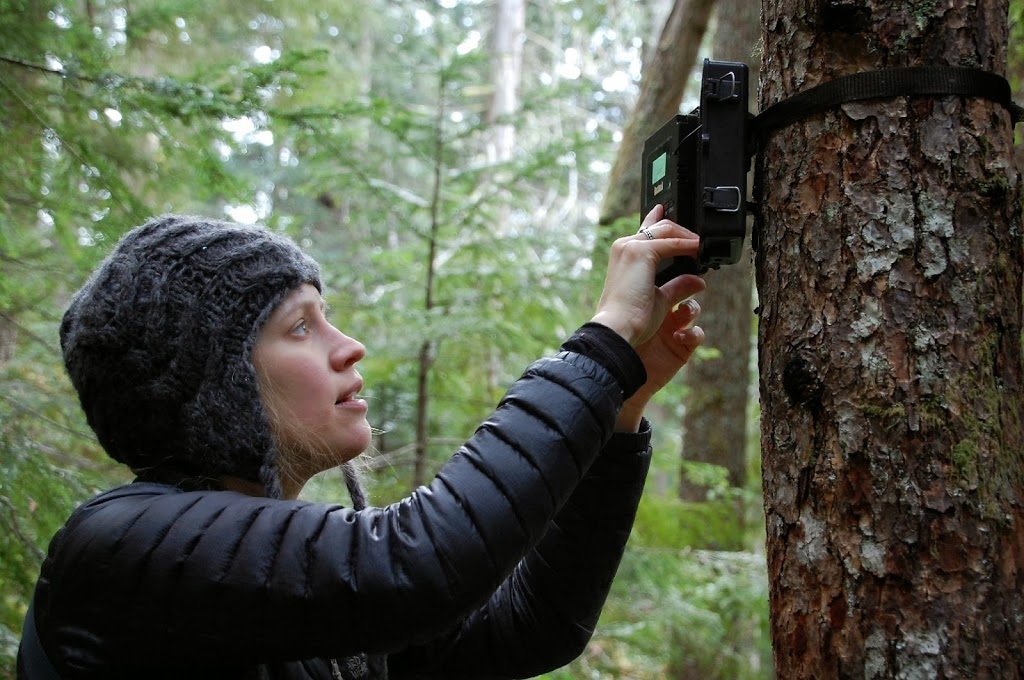
ASC volunteer Angela Bohlke sets up a motion-sensor camera to look for martens deep in the ONF. Photo by Erin Johnson.
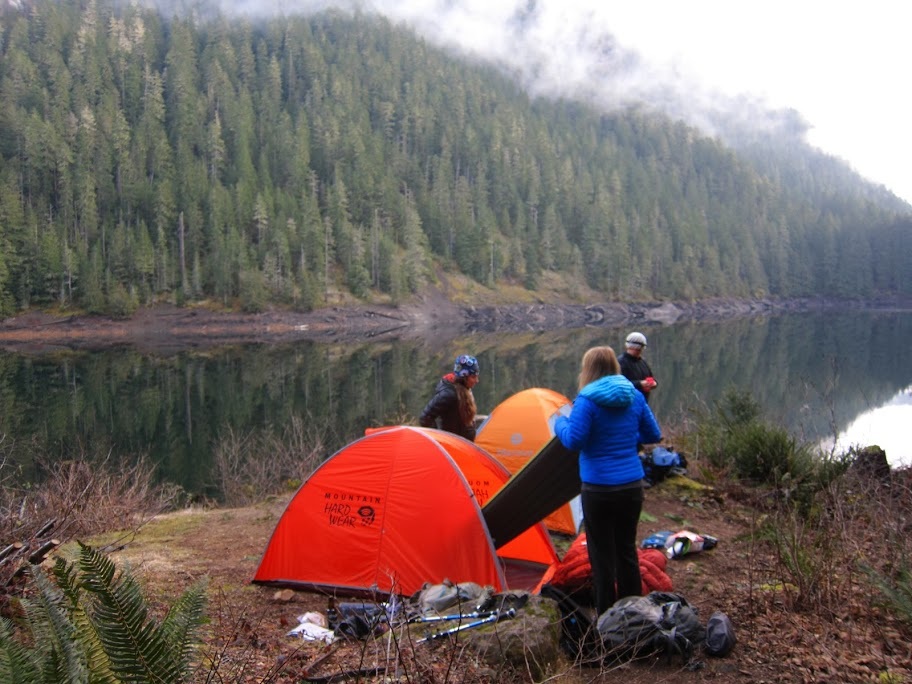
Breaking down camp, a necessary step for these adventurers on their way to their backcountry site. Photo by Craig Weiland.
Though the main objective is to look for marten, biologists in the ONF and Olympic National Park are also very interested in signs of other carnivores, particularly the fisher. The fisher is the martens slightly larger cousin and is also a member of the Mustelidae family along with the weasel, otter, badger and wolverine. The parallels between the fisher and marten don’t end there. Like the marten, fisher were once plentiful on the peninsula and, largely due to humans, were reduced to only a very small vestige of their historical population. Once the fisher was determined to have been extirpated from the peninsula, the National Park Service initiated an effort to reintroduce the species to the area.
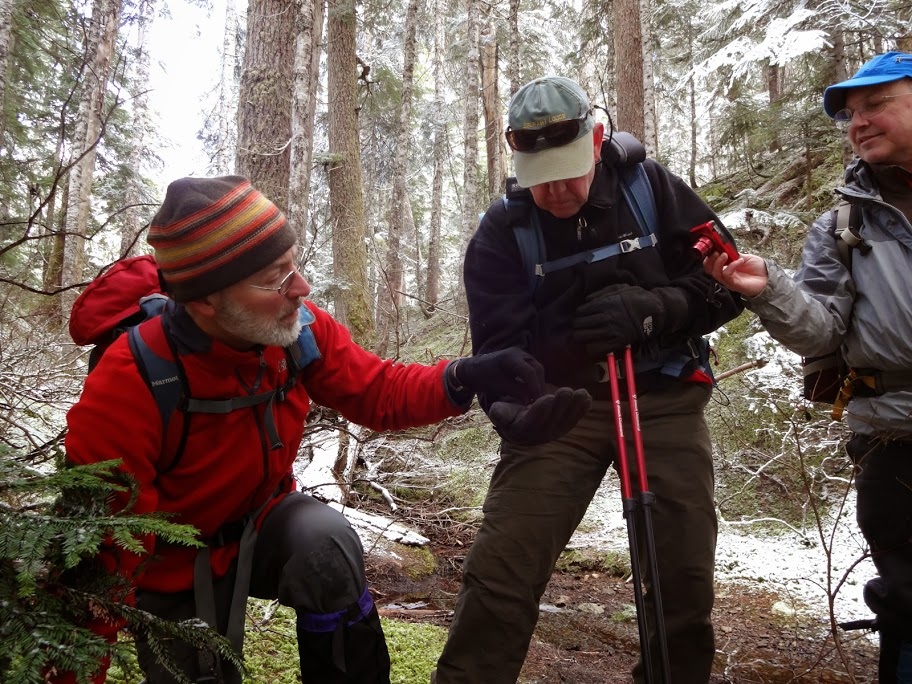
ASC projects like the marten study bring people together like Bill, Brian and Mason who take a moment to look for carnivore signs just off the trail. Photo by Bill Agnew.
Though we still have yet to find signs of a marten, this year’s study is already yielding fruit. During the first round of camera checks two weeks ago already two different camera stations were visited by a fisher. Betsy Howell says, “the first check showed we got a fisher at two different cameras… I have an inkling that it may be the same animal as the stations are only 1.6 miles apart (as the fisher roams), but one never knows for sure.”
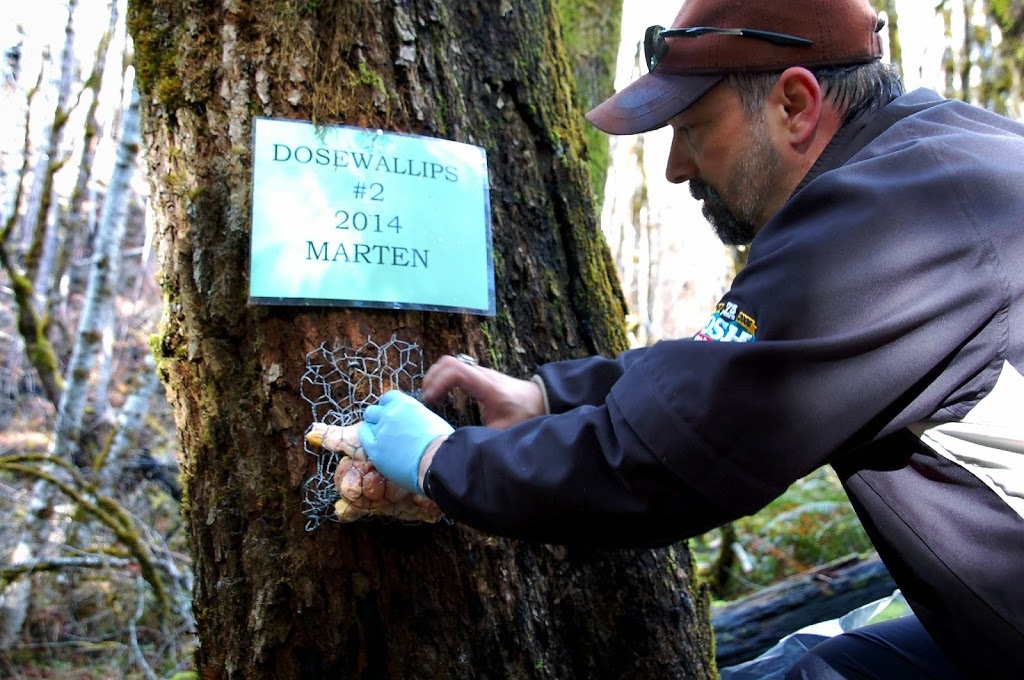
Olympic Peninsula local Ron Staggs secures bait to a tree. Photo by Erin Johnson.
National Park Service biologists who are intimately involved in the fisher project suspect the fisher (or fishers) may be females. This is particularly exciting because they were found in an area that was not heavily used by fisher during an earlier telemetry study of the reintroduced animals and female presence is a good prospect for reproduction.

Allison Smith has commited to traveling every few weeks from Olympia to meet up with her partner, April, from Portland to make the 3,000 vertical foot trek up to their sites. Photo by Jordan Holsinger.
So as the study continues we of course are still hoping for that elusive marten sign but are excited and encouraged to have found fisher already. I was fortunate enough last weekend to track a marten to a feeding site in the Gallatin Range in SW Montana, where the marten population is much stronger. The experience gave me an even greater desire to do what I can to help the Olympic Peninsula population, if any individuals still remain. Crews will be heading out for their next check this weekend and we’re still crossing our fingers for a marten sighting.
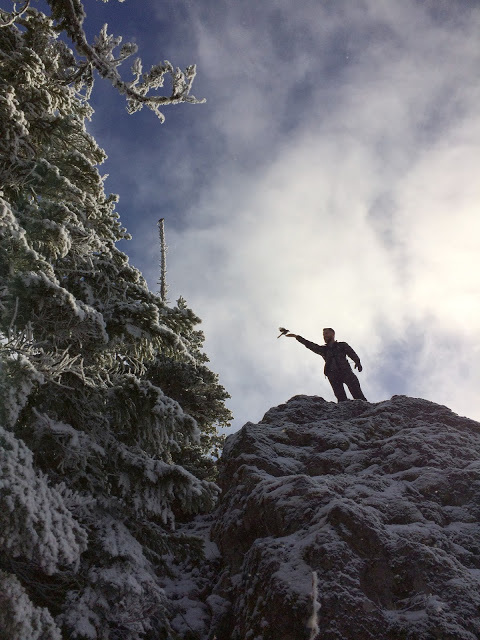
Every day in the forest brings a wonderful surprise. Sometimes it is finding a fisher on your camera, and others it is interacting with a friendly Jay. Photo by Jordan Holsinger.





